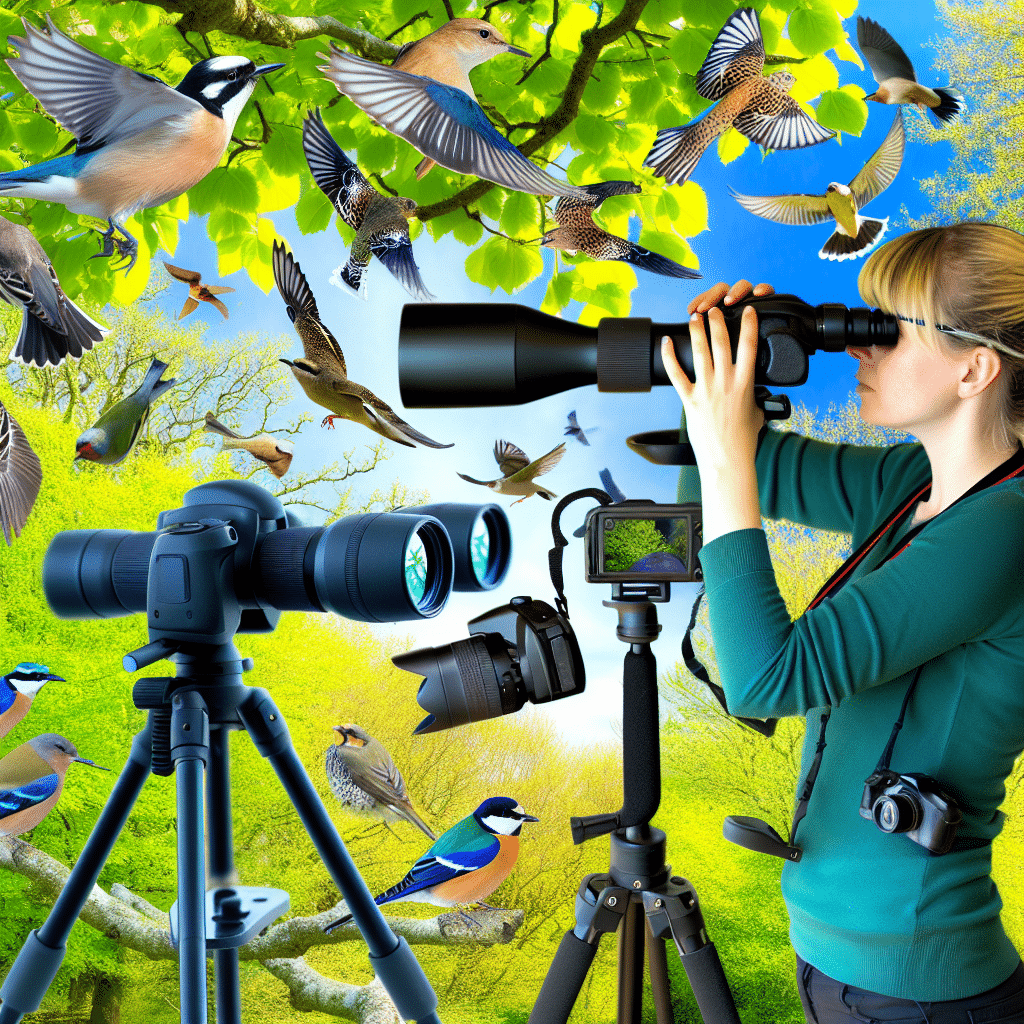Birdwatching, also known as birding, is an engaging and fulfilling hobby that connects you with nature in a unique way. Whether you’re a novice birder or have been watching birds for years, one thing remains constant: good optics are essential for a fulfilling experience. Choosing the right birdwatching optics can be overwhelming given the myriad of options available. This article will provide a comprehensive guide on how to select the best birdwatching optics to enhance your avian adventures.
What Makes a Good Pair of Binoculars?
Birdwatching optics start with binoculars, the quintessential tool for getting a closer look at your feathered friends. But what should you look for in a good pair?
Magnification and Objective Lens Diameter
When selecting binoculars, you’ll often see numbers like 8×42 or 10×50. The first number indicates magnification power, while the second number refers to the diameter of the objective lens in millimeters. For birdwatching, a 7x to 10x magnification is ideal. Any higher magnification can make it difficult to keep the bird in view due to hand shakiness.
Field of View
A wider field of view allows you to see a larger area, making it easier to locate birds. This is especially useful when observing birds in flight or in dense foliage. Binoculars with a field of view of around 300 feet at 1,000 yards are generally recommended for birdwatching.
Lens Coatings
Quality lens coatings can significantly enhance light transmission and reduce glare, making for a clearer and brighter image. Look for binoculars with fully multi-coated lenses to ensure the best birdwatching experience.
Weight and Ergonomics
Since you’ll be holding up the binoculars for extended periods, make sure they are lightweight and comfortable to handle. Ergonomics are crucial; a good pair should feel balanced in your hands and come with adjustable eyecups for those who wear glasses.
Spotting Scopes: Are They Worth the Investment?
While binoculars are versatile and portable, spotting scopes provide enhanced detail for distant birds. But are they worth the investment?
Magnification Power
Spotting scopes generally offer higher magnification levels, ranging from 15x to 60x, making them suitable for shorebirds, raptors, and other distant subjects. However, higher magnification often means a narrower field of view and the need for a steady tripod to reduce vibrations.
Objective Lens Size
A larger objective lens (around 60mm to 100mm) gathers more light, crucial for low-light conditions such as dawn or dusk. However, larger lenses also make the scope heavier and bulkier.
Eye Relief and Eyepieces
If you wear glasses, look for spotting scopes with long eye relief (15mm or more). Also, choose scopes with interchangeable eyepieces, allowing you to adjust magnification power and field of view to suit different birdwatching scenarios.
Durability and Weather Resistance
Spotting scopes typically require a significant financial investment, so durability is essential. Opt for models that are waterproof and fog-proof, ensuring they can withstand varying outdoor conditions.
What About Camera Optics for Birdwatching?
For those who wish to capture their birdwatching moments, camera optics play a crucial role. But what should you look for in a camera lens for birdwatching?
Focal Length
A longer focal length (300mm or more) allows you to capture detailed images of birds from a distance without disturbing them. Telephoto lenses are the go-to option for bird photographers.
Image Stabilization
Given that birds are often in motion and you might be shooting handheld, image stabilization can help reduce camera shake and produce sharper images.
Autofocus Speed
Birds are fast and unpredictable. A lens with quick and accurate autofocus will help you seize those fleeting moments.
Weather Sealing
Birdwatching often takes place in various environments and weather conditions. A weather-sealed lens will ensure longevity and dependability in the field.
Final Thoughts: How to Make the Right Choice?
Choosing the right birdwatching optics boils down to your specific needs and budget. Beginners might start with a reliable pair of binoculars, while more seasoned birders might invest in advanced spotting scopes and camera lenses.
Evaluate Your Needs
Identify what types of birds you are most interested in and the environments where you will be birdwatching. Tailor your optics to fit these criteria.
Test Before You Buy
Whenever possible, test the equipment before making a purchase. Visit stores with knowledgeable staff or attend birdwatching events where you can try different optics.
Budget Considerations
While it’s tempting to go for the most expensive gear, remember that quality optics are available at various price points. Prioritize features that matter most to you.
Birdwatching is a hobby that can provide endless joy and fulfillment. By investing in the right birdwatching optics, you can elevate your experience and deepen your connection with nature. Happy birding!




